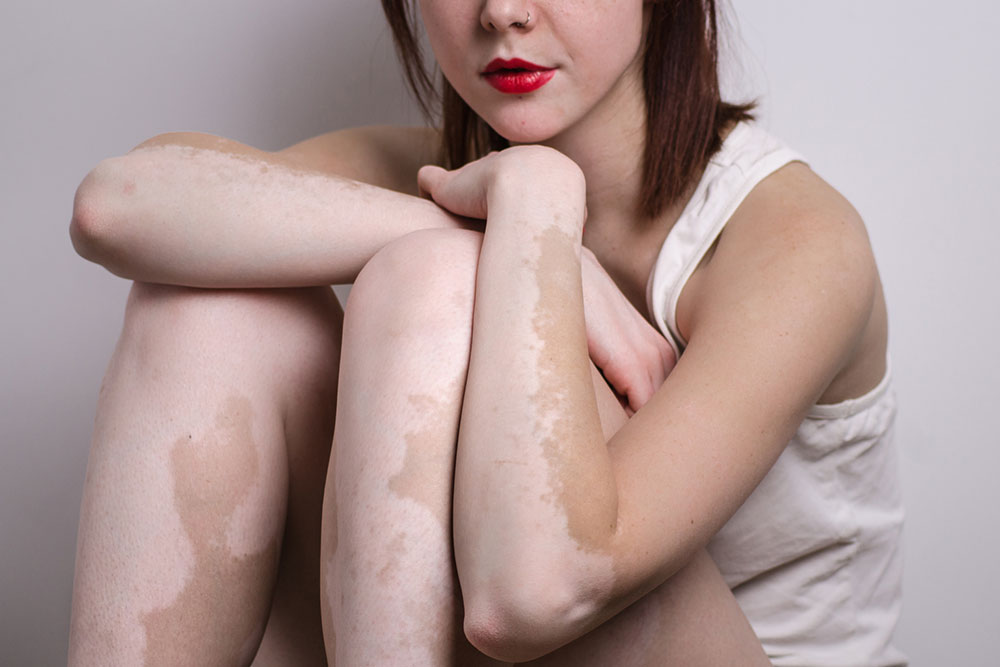Vitiligo – Symptoms, causes, and remedies

Vitiligo is a skin condition that causes loss of skin pigmentation in patches. Although vitiligo can affect any body part, it typically occurs on one’s face, hands, neck, and skin folds. Sometimes, it may also affect the eyes, mouth, wrists, fingers, and genitals. It has been estimated that about 2.8 million people nationwide develop this condition, which is believed to result from a combination of genetic and environmental causes. Here’s everything to know about vitiligo:
Vitiligo signs and symptoms that should not be ignored
Loss of skin color in patches
Persons with vitiligo experience gradual loss of skin pigmentation, which takes place in patches. It usually shows up in skin creases and certain areas of the body, eventually spreading to other parts.
Graying or whitening of one’s hair
Early whitening or graying of one’s hair on the eyebrows and eyelashes, scalp, and beard is a common symptom of vitiligo.
Affected mucous membranes
Sometimes, vitiligo spots may develop only on the mucosal parts of one’s body, such as the inner nose, lips, and genitals. This condition is called mucosal vitiligo.
Causes and triggers
Vitiligo is thought to be caused by a deficiency of melanin, which is responsible for one’s skin color. Here are some factors that may trigger or aggravate this condition:
Genetic factors
Studies have shown that mutations to the genes NLRP1 and PTPN22 are associated with increased susceptibility to vitiligo. Malfunctioning of these genes causes the immune system to attack itself, leading to tissue damage and inflammation and triggering vitiligo symptoms.
Cuts or sunburns
Individuals already predisposed to vitiligo may be highly sensitive to any external factors that can cause harm to the skin. For example, a cut or sunburn can cause one to develop vitiligo even in areas that were previously free of these symptoms.
Exposure to certain chemicals
Exposure to certain types of chemicals can also cause the onset or spread of vitiligo. For instance, research has found that occupational exposure to certain melanocytotoxic chemicals may trigger this condition. Further, persons exposed to phenols and catechols may be four times more susceptible to the disease.
Certain pre-existing health conditions
Some studies have linked certain pre-existing health conditions, such as renal failure, dyslipidemia, and hypothyroidism, with the development of vitiligo.
Treatment and management options
Light therapy
Light therapy involves exposure to UV light to restore the skin’s original color and reduce whitening. A specific type of light therapy, called phototherapy, is often recommended by dermatologists for large patches of vitiligo.
Skin grafting
Skin grafting involves extracting some patches of healthy skin from the patient’s body and transplanting them to affected areas.
Cell transplant
Here, after removing healthy skin patches from the patient’s body, the dermatologist extracts cells from these patches and transplants them to the affected areas.
Depigmentation
This procedure is carried out only during extreme situations in which vitiligo has spread almost throughout the body. Here, patients may choose to remove the original skin color even from the few healthy patches remaining in the body.



